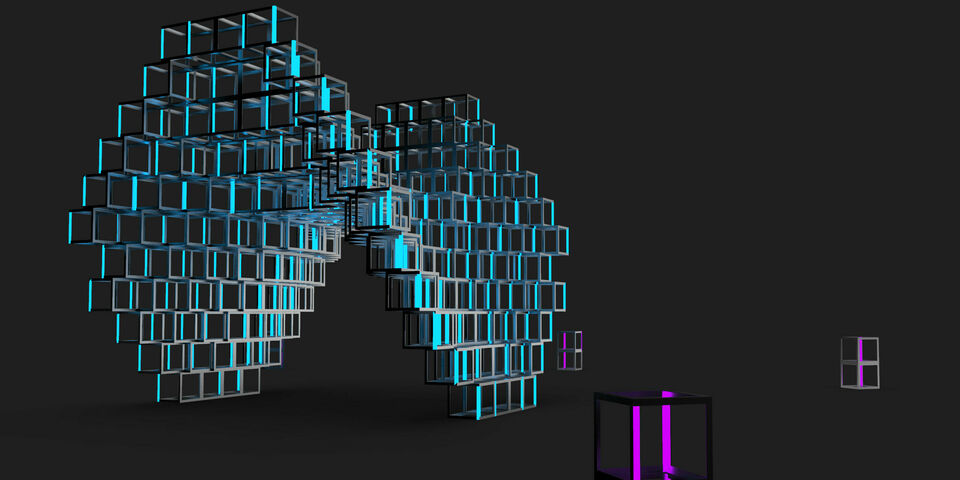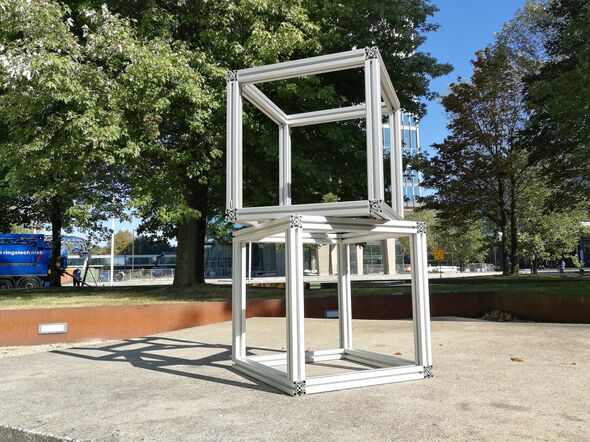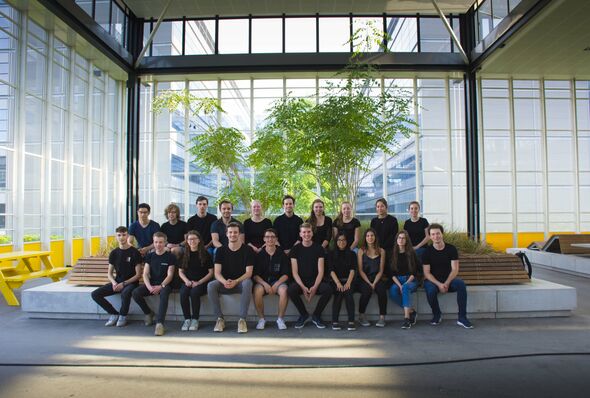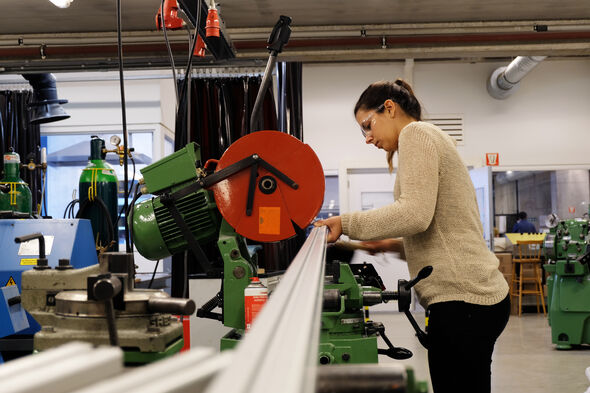Lucid and CHEOPS collaborate on GLOW eye-catcher
A team of 22 TU/e students is working on a large, interactive light installation for GLOW, which they hope will become one of the eye-catchers of the event, especially in 2019. Visitors this year can enjoy a preview with ‘Loop’, an artwork of luminous cubes that invites visitors to collaborate - chiefly with one another.
Back in 2016, when the GLOW route included the TU/e grounds, students of Built Environment and Industrial Design were already showing where cooperation between their two departments could lead. ‘LumenUs’ was the name of their work of light art, which was given a place next to Laplace Square: a complex structure of illuminated rods and steel cables held in balance, responsive to movements by members of the public.
That collaboration between the study associations CHEOPS and Lucid only whetted appetites for more, tells Built Environment student Niels Dusseldorp. So a year ago, twenty-two Bachelor's and Master's students of the departments mentioned above - among them Dusseldorp - came together, this time under the name IGNITE. “Our first step was to brainstorm: Do we want to make an interactive installation? Sometime static? Or a show? What do we want to achieve?”
Hypar
The result is ‘Hypar’: an interactive system that responds to the input of passersby. A large installation measuring roughly six by five by four meters, consisting of more than two hundred cubes “which together form a Pringle”.
Read on below the photo.
With Hypar, IGNITE is keen to get people working together, and to let something emerge out of this collaboration with strangers, says team captain Sietse de Vries, Master's student of Building Physics descriptively. This will involve a couple of people being given remote control and of the installation and, in interaction with one another, creating the artwork, a light show for everyone who finds themselves in the middle of the installation. Dusseldorp: “We think it can truly become one of the eye-catchers at GLOW.”
To put the concept into practice, IGNITE is collaborating with, among others, Assistant Professor and environmental psychologist Antal Haans, whose work includes research on the influence of light on human behavior on Stratumseind. De Vries: “We are keen to apply this kind of TU/e research and together with IGNITE consider how we can best achieve the cooperation with the public we have in mind.”
Having worked out the concept, the students were allowed to pitch their idea to GLOW's organizers. And, says De Vries, the response was quickly enthusiastic: “A student team that shows something of the research being done at TU/e always does well. What's more they were very pleased with everyone's experience of LumenUs two years ago.”
Read on below the photo.
A little too ambitious
For the upcoming edition of the festival of light art, however, the scale of Hypar, with according to De Vries a budget of "almost a hundred thousand euros", was a little too ambitious. So this year at GLOW, IGNITE will first present a more modest version of the concept: 'Loop', a similar system, but in the form of a circle comprising twenty cubes. With this structure, the students, with the help of visitors, are keen to test various types of interaction from day to day. “What works, what draws people to it?” says the team captain. GLOW-goers won't yet be able to walk under the installation this year, but nonetheless, IGNITE hopes to give visitors a nice preview of Hypar in 2019.
The entire installation (the exact location on the GLOW route is being kept secret a little while longer) will be built by the students themselves. According to Dusseldorp, the sections for the cubes have already been sawn and “the first pieces of electronic equipment are arriving in dribs and drabs”. TU/e too welcomes the project, he believes, and is lending support, including by giving the team a space of its own in innovation Space. “And we are allowed to use the workshop there, that's really useful.”
Dusseldorp thinks it is “cool to see how the ID students are really focused on the electronics and designing the interaction, and how the Built Environment students for their part are working on the structural design. They are very complementary”.
No drone show
Another group of TU/e students, brought together in team Firefly, also had hopes of showing its accomplishments at GLOW. But the drone show they had planned for the event (and for the Robot Love expo) proved "a little too ambitious" for the time being, spokesperson Paul van Dooren let it be known earlier this month.
Last year GLOW was visited by some 740,000 people over the course of eight days.





Discussion